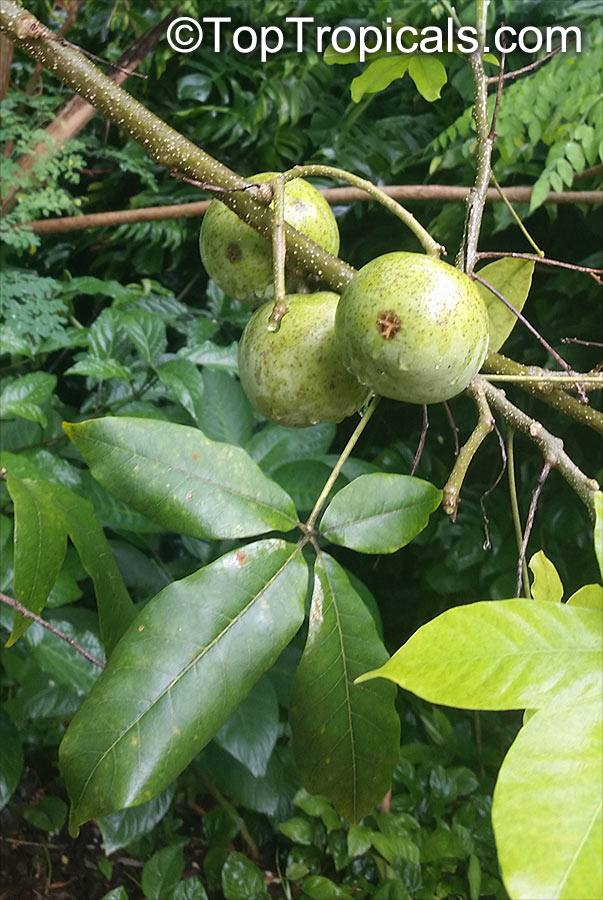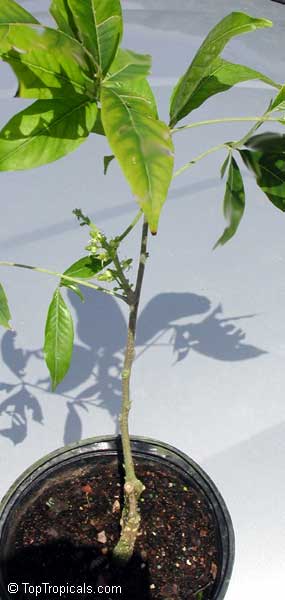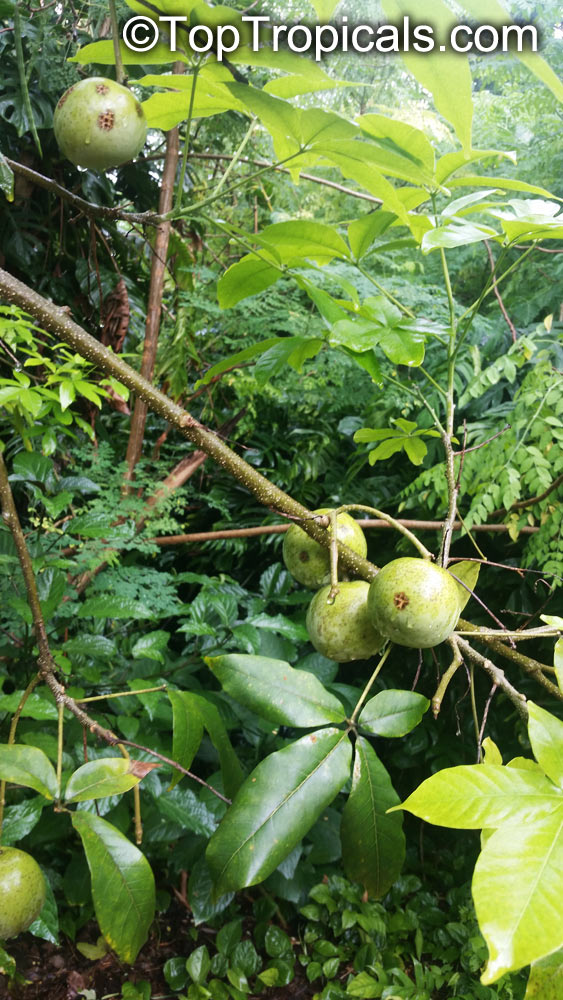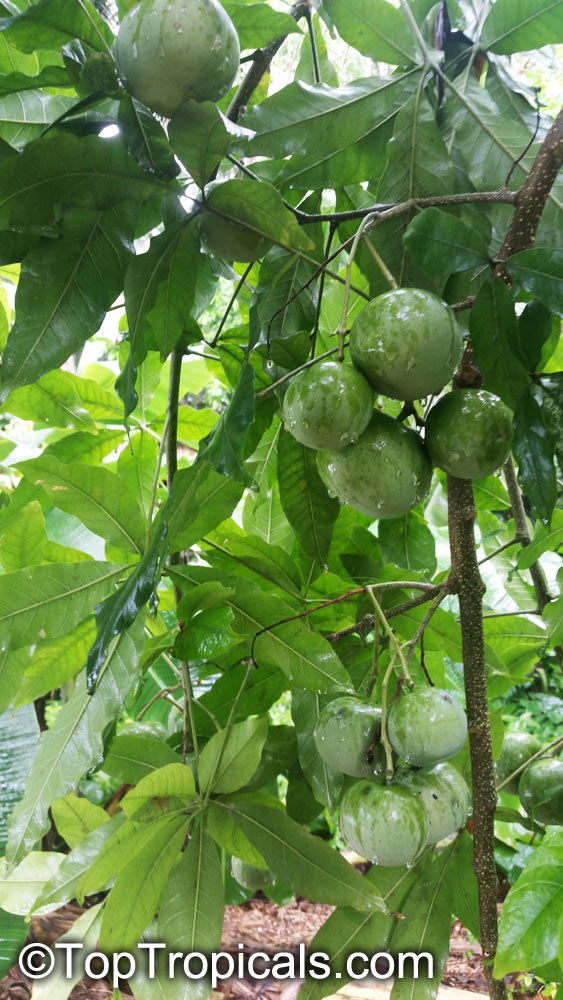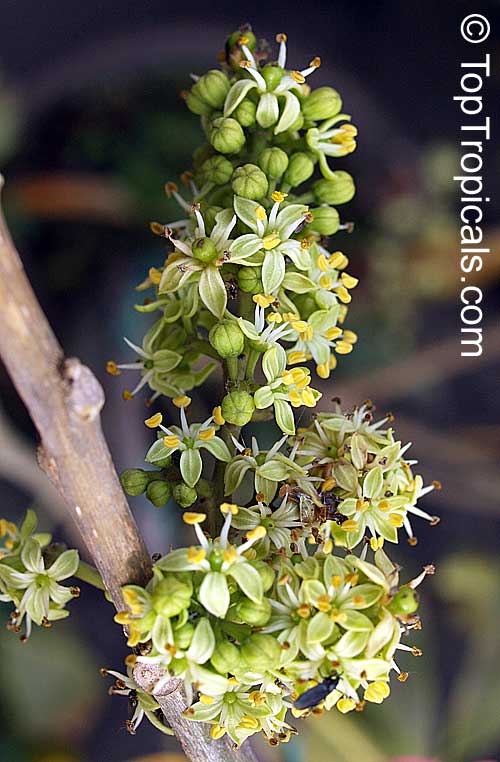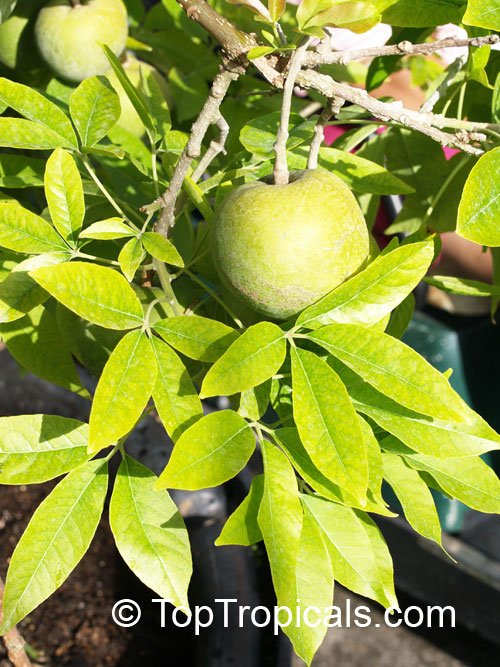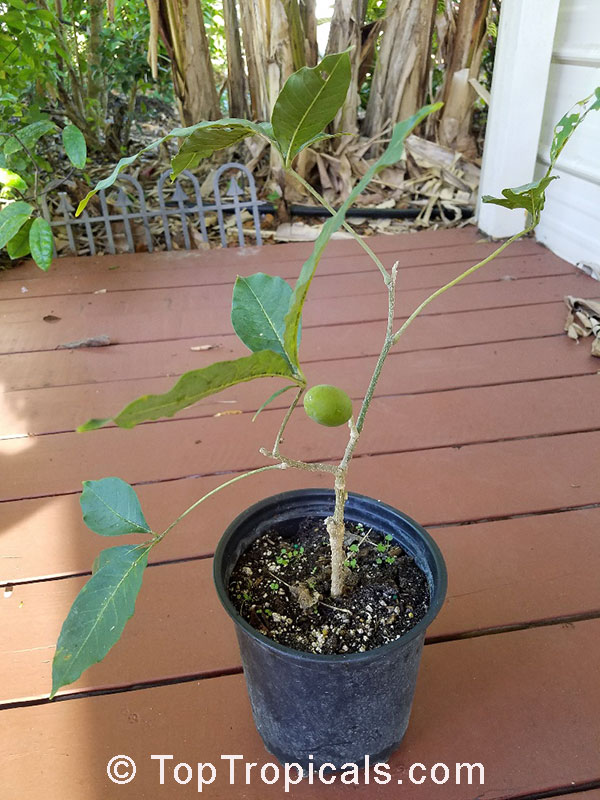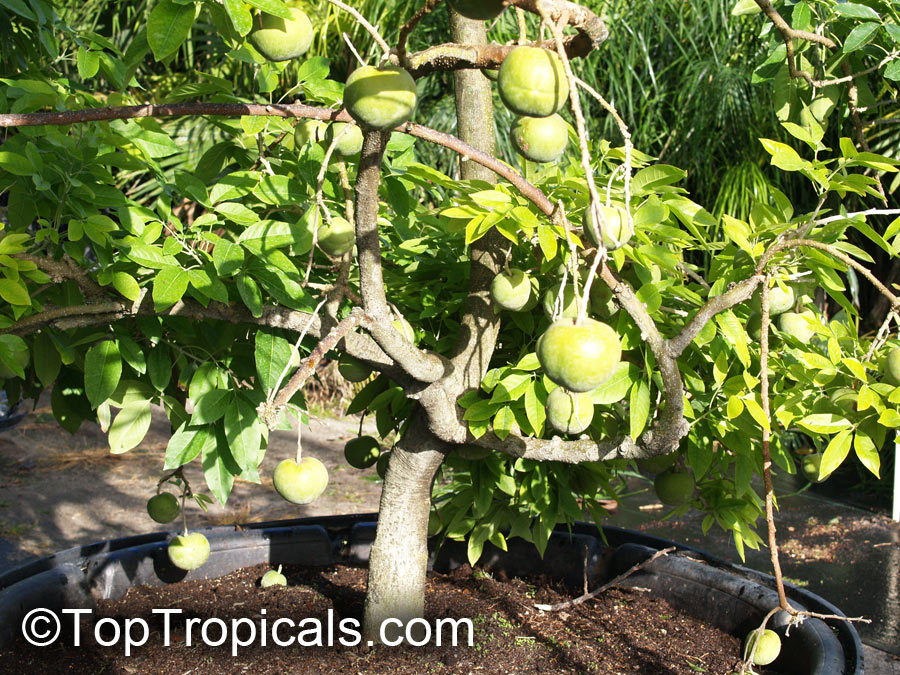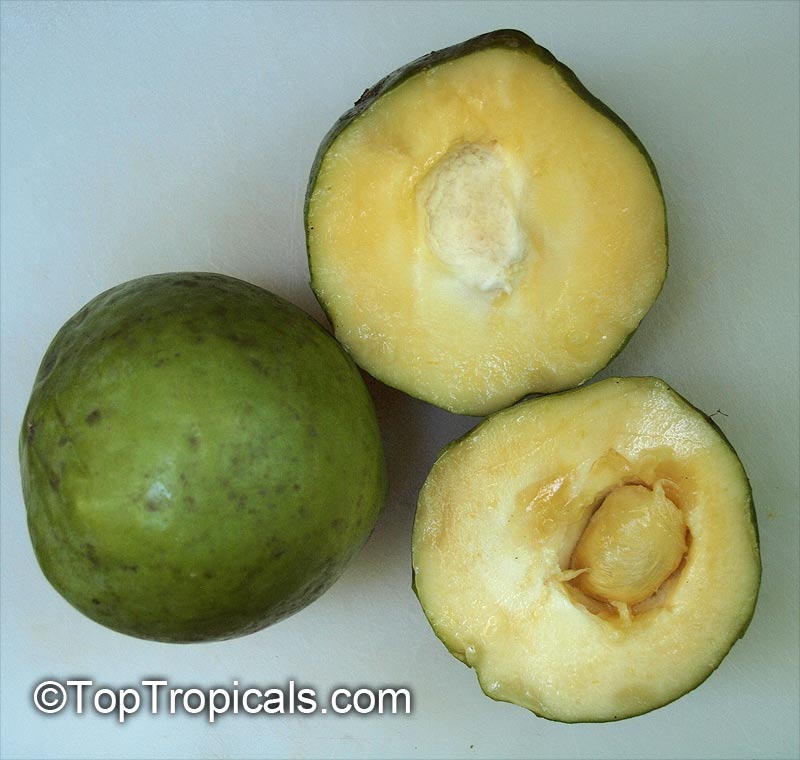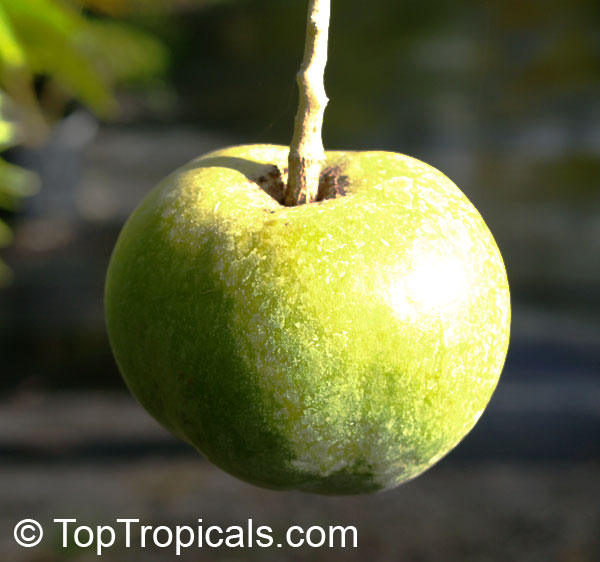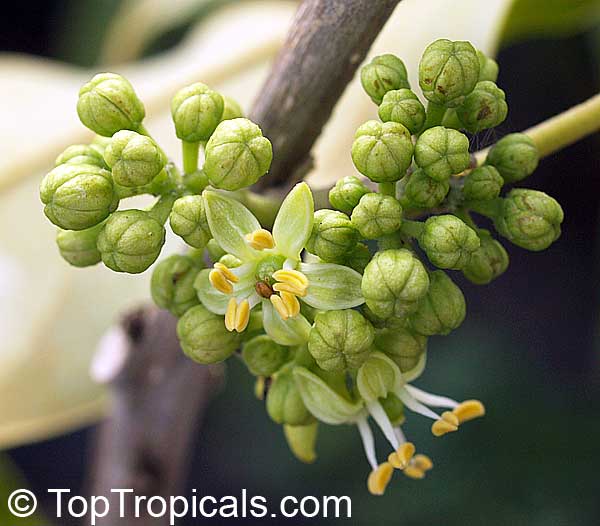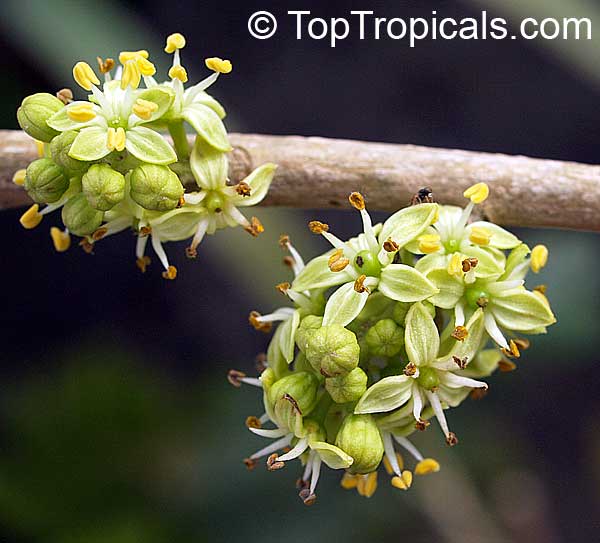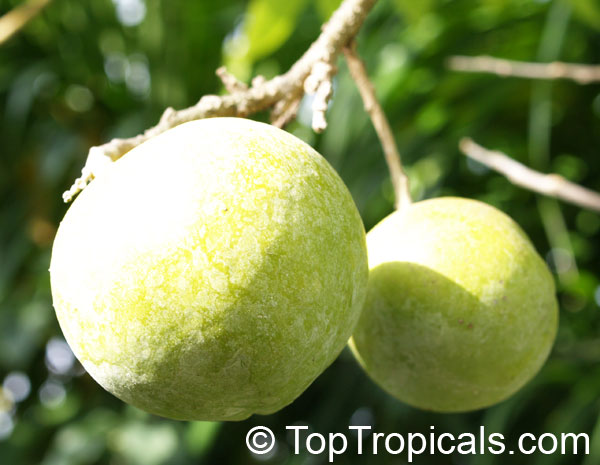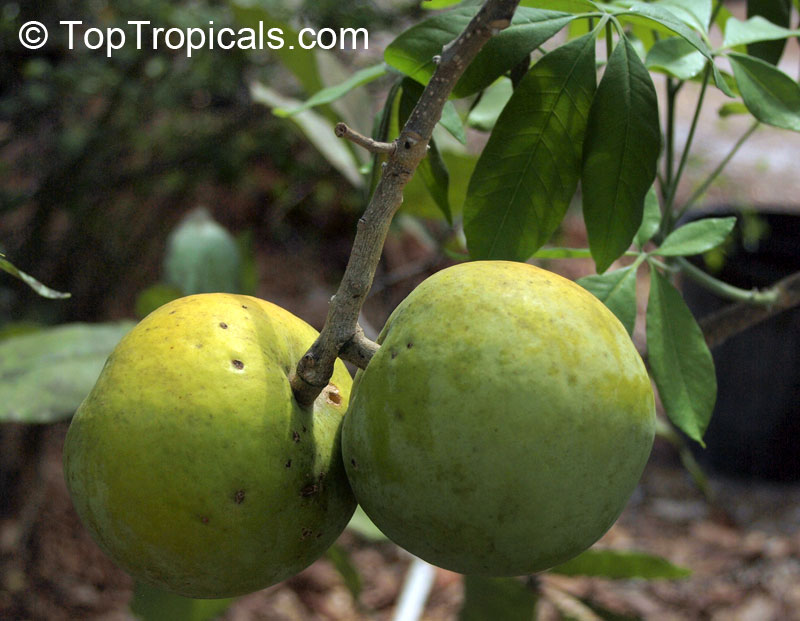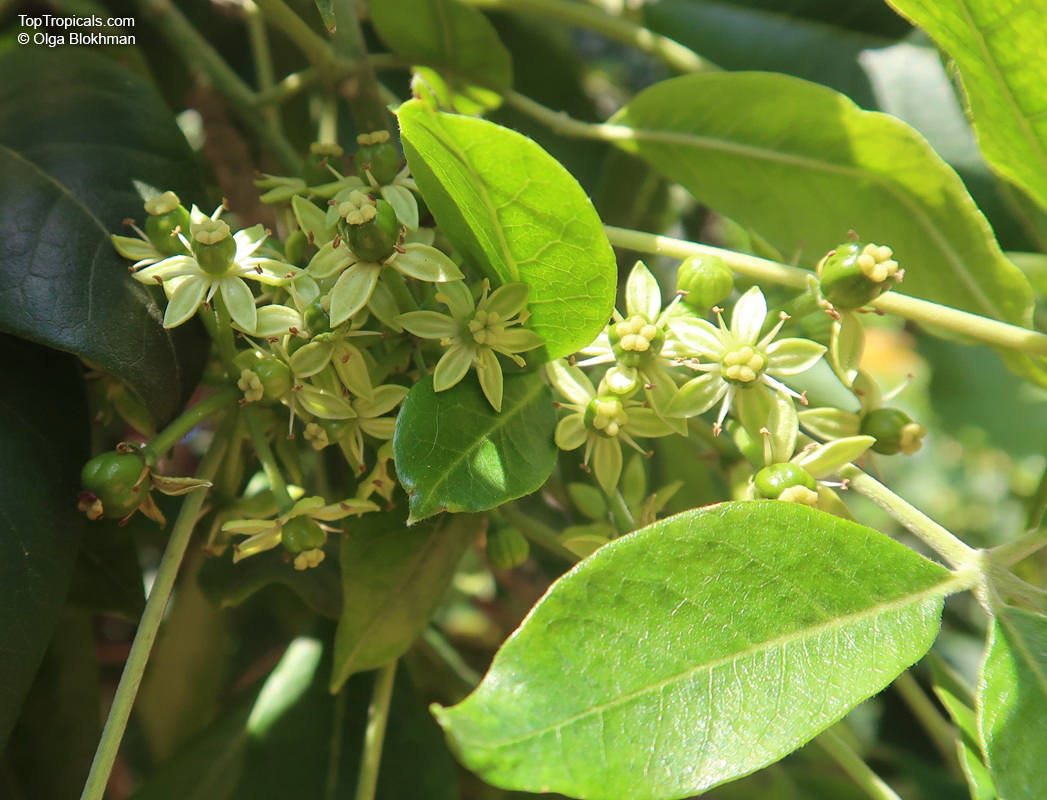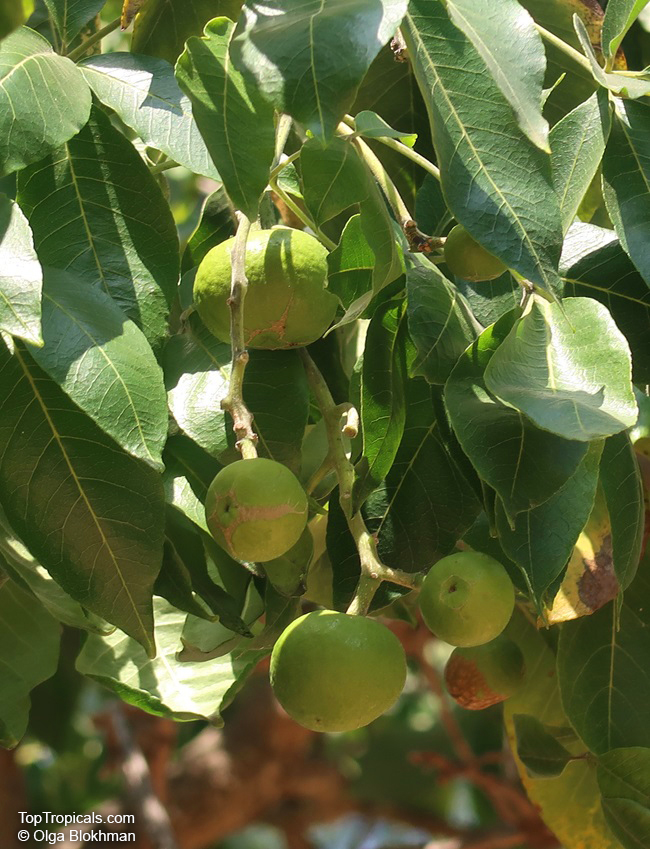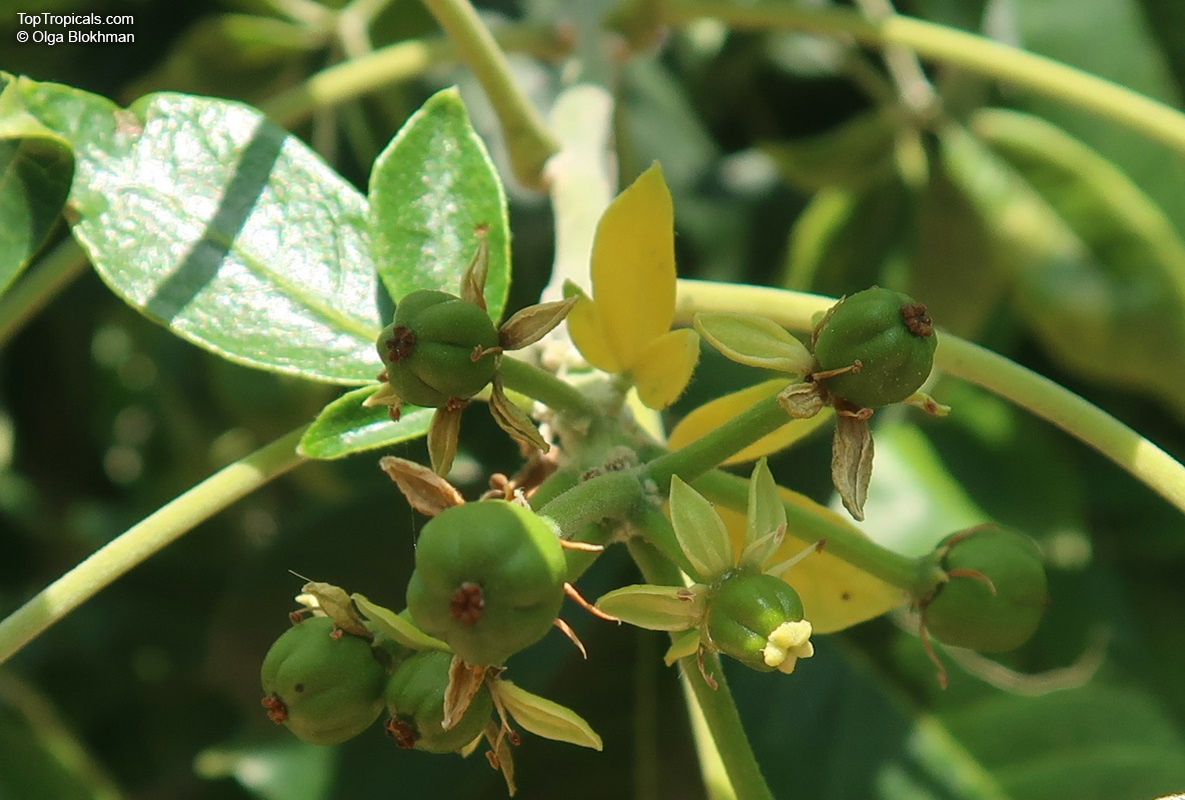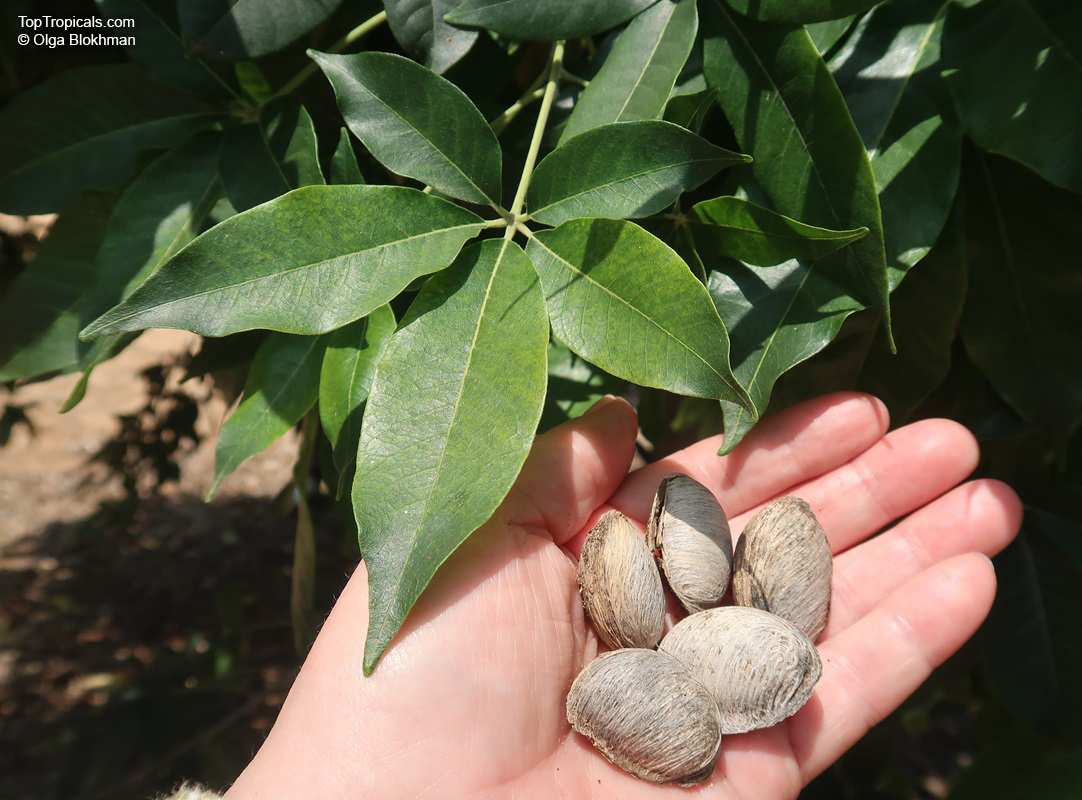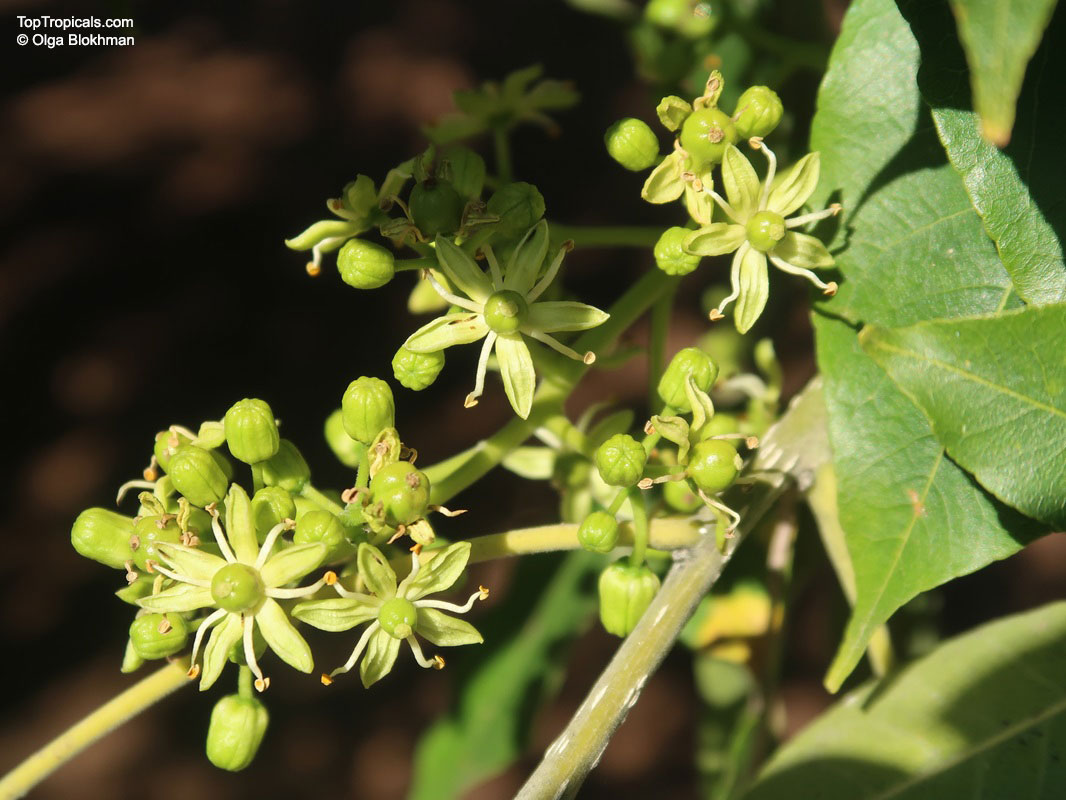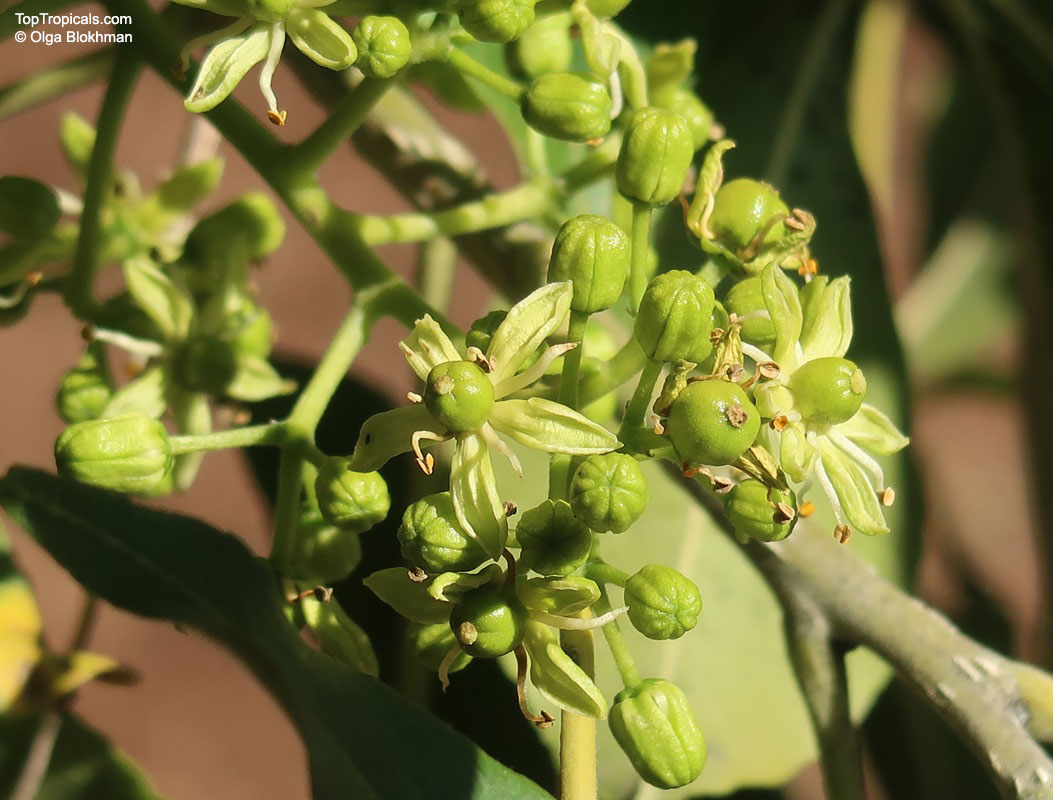Casimiroa edulis (White Sapote)
Top Tropicals Plant Encyclopedia
Botanical name: Casimiroa edulis
Common name: White Sapote
Family: Rutaceae
Origin: Central America




Casimiroa edulis, more commonly known as the White Sapote, is native to Central America and highly appreciated for its taste. Its flesh has the texture and flavor of a creamy custard, making it a popular snack for those looking for a sweet treat. This edible variety is also known as the "sleepy sapote" as it is said to have soporific effects in certain parts of Mexico. There are two main varieties, the Homestead and Dade, and when in season (May -July) its thin-skinned fruit does not ship well.
White Sapote grows up to heights of 20 feet or more. It requires full sun and moderate water, while young plants need protection from cold snaps. The mature plant, however, is cold hardy to at least 30s F for short periods of time. A USDA Zone of 9-11 is ideal for growing this tree.
The white sapote fruit provides a variety of other benefits. It is an excellent source of energy and is rich in proteins, vitamins B and C, phosphorus, and calcium, as well as dietary fiber. This tree can produce a vast amount of fruit, offering a delicious dietary supplement for those looking for a nutritious snack.
White Sapote does best in a pot in cold regions. During warm seasons, the plant needs to be watered and fertilized frequently, and during colder months, it should be moved to a sun-protected area.
